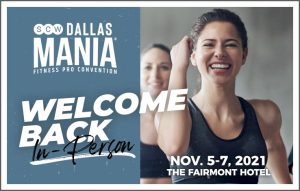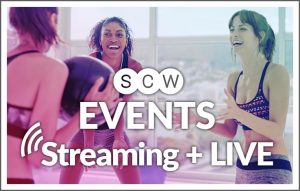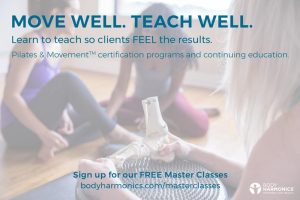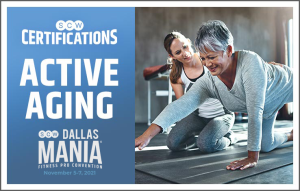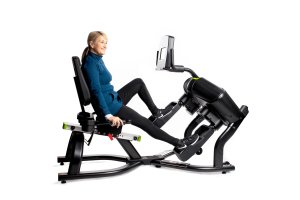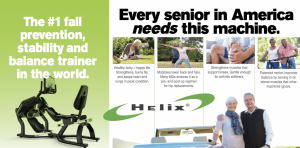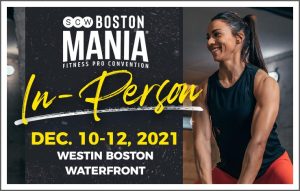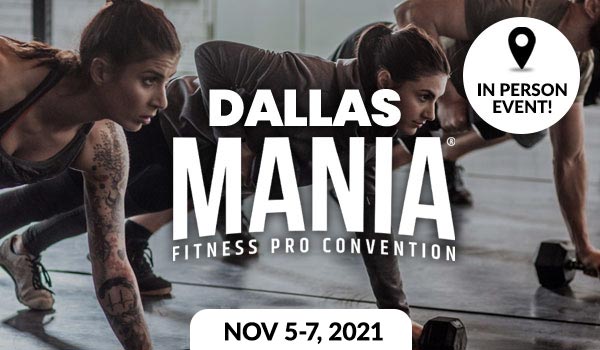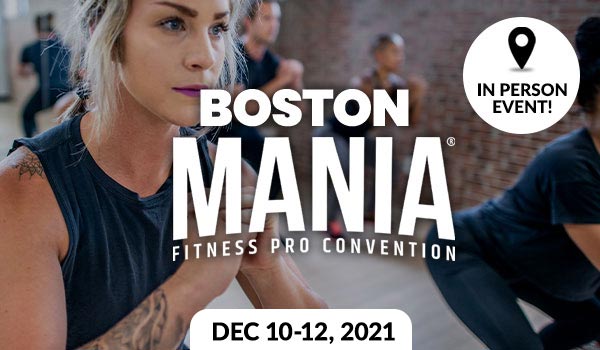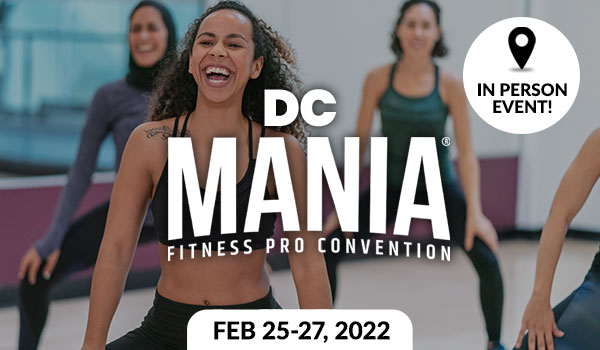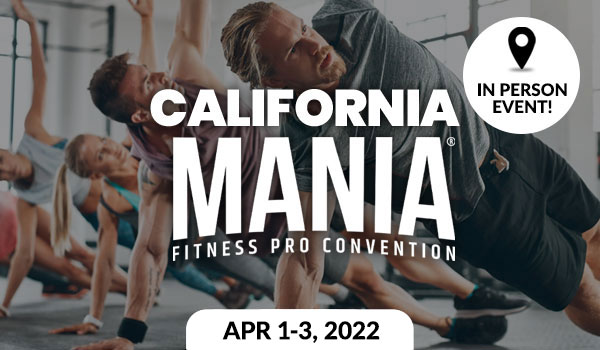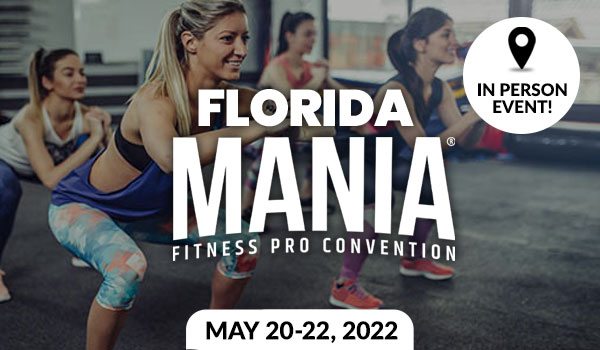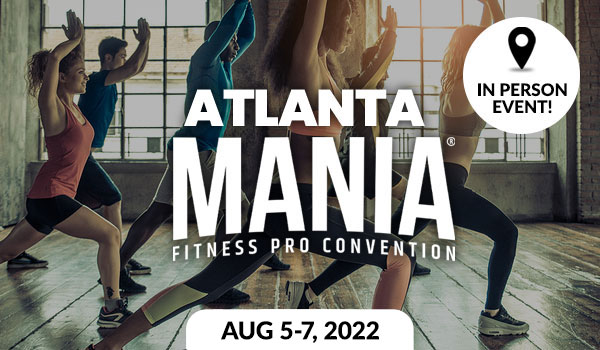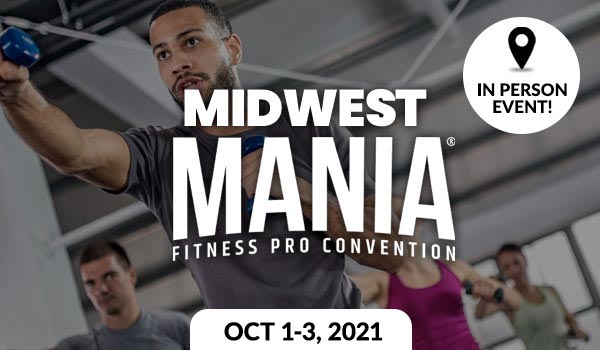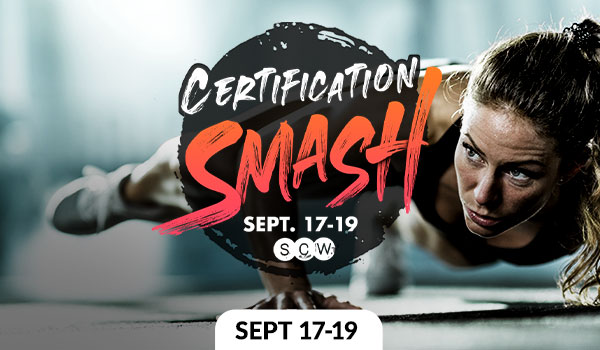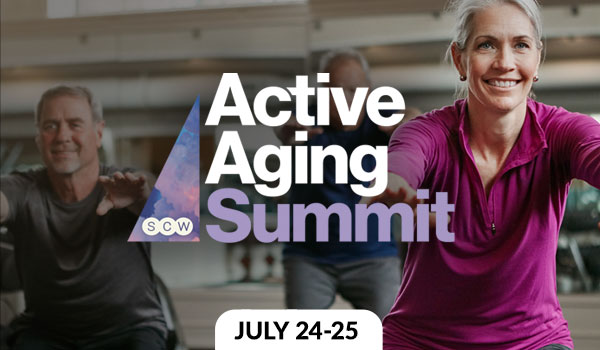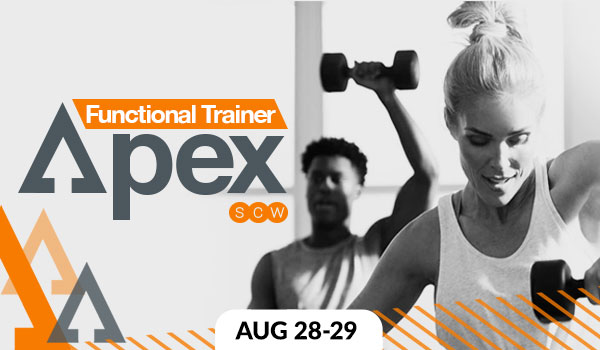
SCW Spotlite: Issue 39

Small Group Personal Training: Strategies to Optimize Group Achievement
by Keli Roberts
Whether you are a personal trainer or group exercise instructor, having some strategies to optimize group achievement is important to growing your class. If you’re a personal trainer you might not have experience in working with more than one or two people, and if you’re a group ex instructor, working in smaller groups may not seem motivating. Being a ‘hybrid’ offers you the best of both worlds: a smaller group is more intimate yet still more motivating, the income stream is potentially better and it’s a fun and social environment for your clients. This excerpt from my book, A Professional’s Guide to Small Group Personal Training, provides you with all the information you could possibly need to build a better business.
Keeping your groups motivated and engaged is important to long-term success. The key lies in your ability to transform your groups from individuals into teams. One of the big advantages to small-group training is that people are no longer accountable to just you; they become accountable to each other. Having people work as a team and support one another creates the kind of synergy that decreases attrition. Building opportunities for teamwork and friendly competition into your workouts can bring out the best in everyone.
Your relationship with your participants is critical. In personal training your ability to build rapport with your clients “is an important determinant of adherence to an exercise program” (Bryant, Green, & Merrill, 2013). Taking the time to lay the foundation of trust and empathy for a new client who may be intimidated can help them build self-efficacy and confidence. Rapport may be the initial deciding factor in whether someone joins your group. Successful trainers consistently demonstrate supreme communication skills, which promotes open communication and the development of trust, which in turn translates into greater levels of participation.
There are three essential attributes needed to develop rapport.
- Empathy
- Warmth
- Genuineness
Empathy is the ability to listen as if you are in the speaker’s shoes. It involves experiencing what it’s like to be the other person, free of judgments. Warmth involves having unconditional positive regard for the other person—not always so easy when some clients might have very different life choices and communication styles than yours. Warmth includes respect and conveys a true level of concern for their needs. Genuineness is all about authenticity and having the ability to be open, honest, and straightforward, without putting up a façade. People recognize insincerity. Once you’ve established rapport it becomes easier to develop a deeper level of trust, an important aspect of the trainer–client relationship. Building relationships with your clients relies heavily on your ability to listen effectively and actively, with empathy and compassion.
Rapport is important in small-group training, but charisma also plays a role. Group training has a different set of demands compared to personal training. The right kind of motivational strategy goes a long way, so understanding your clients’ personalities and what motivates them is valuable. Your style of communication will play a role in your retention. There are many types of motivational cues, such as time or rep countdowns, compliments on technique and form, or even emphasizing the emotional or physical benefit of the work performed. These strategies all work well in group settings.
Building a Team Environment
One of the questions you may ask yourself when considering how to build a team environment in your SGT classes is: Why should we be a team? The team environment should make sense and serve the purpose of moving each individual team member toward their goals. Ideally, the purpose of teamwork is to have people reinforce each other through trust and mutual support. Friendly competition in the right environment with the right group can help achieve this. The value of positive reinforcement for sustaining productive results has been established in business settings and sports teams. A great coach is not only an exercise leader, but also a mentor. Tony Dungy, a highly successful football coach and author of The Mentor Leader, states, “The mentor leader looks at how he or she can benefit others—which in turn ultimately benefits the individual and the organization.” Dungy says the “unity of purpose and a desire to make other people better” begins with the attitude and actions of the coach: “It is through that unity or purpose that lives are changed” (2010).
Moving beyond competence to greatness involves having a compelling vision. A vivid picture of where you want to be and what you will look and feel like upon achieving your goals will drive you forward. Staying focused on your vision helps you move beyond setbacks, so you won’t quit when the going gets tough. Vision builds perseverance. Create a mission statement to guide you towards your destination, then stay on the path by enjoying the process. To build a team, you need to share your vision, so they too can enjoy the journey.
Having a vision and a mission requires aligning your values to your goals. Your mission statement serves to answer the most important question you can ask: Why do I want to do this? If the answer is aligned with your values— what’s important to you as an SGT leader—then this will in turn build your drive. Providing exercise classes is a service that requires putting yourself and your desires aside to best help the people in your groups. In other words, it’s not your workout—it’s theirs! Instructors frequently make the mistake of thinking that they are getting paid to exercise, but this is not the case. You are being paid to coach, guide, and assist your clients to get the best possible workout, helping them move toward their goals while keeping them safe. A great leader does more than teach; they inspire! An SGT leader must inspire their clients into the state of intrinsic or self-motivation. An inspiring leader is trustworthy, authentic, and competent.
Whether you work with individuals or small groups, gaining the knowledge to become a Personal Trainer is not only beneficial to your clients, but increases your value as well. Registration is open for the SCW Personal Training Certification at Dallas MANIA®, Sunday, November 7 at the Fairmont Hotel. Keli’s book, A Professional’s Guide to Small Group Personal Training, is available on the Human Kinetics website.
 About the Author, Keli Roberts
About the Author, Keli Roberts
Keli Roberts was named IDEA International Fitness Instructor of the Year, awarded the SCW Best Female Presenter title, and was inducted into the National Fitness Hall of Fame. Keli leads the SCW Personal Trainer Certification, and the SCW Active Aging Certification and has starred in countless Educational Videos. She is an ACSM EP and a BOSU Elite instructor and a SCHWINN Senior Master Trainer.

Two Proven Exercise Strategies to Help Seniors Avoid Falling
by Margot McKinnon, M.Ed.
The World Health Organization defines Healthy Ageing as “… the process of developing and maintaining the functional ability that enables wellbeing in older age.” At ground level, this translates to people feeling able to be and do what they find valuable and fulfilling.
Evidence shows that an active lifestyle is critical to healthy ageing. But that goes beyond modifying a workout routine appropriate for the 20-something physique to make it “gentle” for the maturing body. Seniors need more than light hand weights and a slow pace. As we age, physical, mental, and emotional changes need to be considered and addressed in exercise programs of any intensity or duration.
One activity critical to seniors’ wellbeing is fall prevention. Most people imagine this to mean balancing on one foot and learning how to get up off the floor. While these activities are important, learning to prevent a fall needs to include conditioning of structures and systems head to toe. Multisensory training and foot and ankle exercises are two examples that improve a person’s ability to balance, shift weight, and navigate changing terrain. Both can be done in short or long intervals, and both are excellent for home programs or on the road.
It also showed that almost six in ten citizens across the 29 markets say they would like to do more exercise (58 per cent), with the biggest obstacle being lack of time (37 per cent).
The study also throws up interesting geographical and cultural differences when it comes to barriers to physical activity.
Multisensory training
With multisensory training, the sensorimotor, the visual, and vestibular systems are targeted. All three are involved with maintaining equilibrium. Changing the environment to stimulate one system over the others is a simple way to conduct this type training and a fun way to challenge both body and mind. Altering the body position, closing one or both eyes, or using different types of surfaces–cushiony, spiky, stable, or unstable–are all examples of changing the environment. The key is working on the systems that control balance and not just on balance exercises.
Example of a multisensory exercise sequence:
- Sit on a chair and do arm movements
- Sit on a balance cushion on a chair and do arm movements
- Sit on a balance cushion on a chair, close eyes and do arm movements
- Sit on a balance cushion on a chair, close eyes, turn to one side slightly, and do arm movements
Mobility for feet and ankles
People who can align their center of mass (body) directly above their base of support (feet) during quiet standing can sway as much as 12° in a forward-backward direction (8° forward and 4° backward) and 16° laterally before they must take a step. This ability to sway without taking a step is referred to as a stability limit. In older adults who are beginning to experience balance problems, stability limits decrease, especially in the backward and lateral directions. The result is an increased risk of falling.
What causes a decrease in stability limits?
- Weak ankle muscles and reduced range of motion in the ankles
- Neurological trauma such as stroke or Parkinson’s disease
Exercises to improve stability limits:
- Wiggle toes in as many directions as possible
- Plantar and dorsiflex ankles (“point and flex feet”)
- Draw circles with feet
- Draw the alphabet with feet
- Squat with emphasis on ankle motion (bending at the ankles)
In the common ageing-related doomsday scenario, people imagine life as an old person to include living in a body that loses muscle strength and bone density by the minute. Ageing gets equated with chronic aches and pains, varying degrees of cognitive decline, and social isolation with no sense of purpose.
General physical activity is not the panacea for ageing, but when healthy ageing is the main objective, physical, mental, and emotional needs of our senior population can be met easily with thoughtful and thorough exercise programming. By 2021, one in five Canadians will be over the age of 65, and one in three over the age of 55. By 2061, it is projected that there will be 12 million seniors to 8 million children. These compelling numbers should be a wake-up call for all of us working in the fields of exercise and movement education to learn what creates the best results for older adults and why.
Give these short video programs a try
Waking up your feet
https://www.youtube.com/watch?v=jelSA1JCo9U
Multisensory exercise for feet and ankles
https://www.youtube.com/watch?v=f7WnoYqiPlw
Training sit to stand using a chair
 About the Author, Margot McKinnon, M.Ed.
About the Author, Margot McKinnon, M.Ed.
Margot McKinnon, M.Ed., is founder and CEO of Body Harmonics Inc., a full-service health and fitness company that has been dedicated to helping people to teach well, move well and be well—in person and online—for more than 20 years. Science-driven content and adult education practices form the backdrop for all services offered through Body Harmonics and underscore Margot’s core belief in making movement a multisensory experience that is engaging and empowering for all. www.bodyharmonics.com

Can a Cardio Machine Help Reduce Fall Risk?
by Lisey Good
You may have heard of lateral trainers, the cutting-edge cardio machines used by professional sports franchises like the LA Lakers, the Cleveland Cavaliers, and the New England Patriots. These machines work the body differently than traditional cardio like treadmills, steppers or bikes which simply move the body front to back. By forcing the lower body to move side to side, up and down AND front to back in a single motion, lateral trainers recruit more muscles than traditional cardio, burning more calories, getting users’ target heartrates up more quickly and strengthening key muscles crucial to support of the knees and hips. But can lateral trainers also help to reduce falls, the #1 cause of injury in people 65+? A recent study about balance and fall risk in older Americans says yes.
Those who work with senior populations –or who themselves are eligible for that AARP card — likely know the sobering statistics: there are 37 million falls every year severe enough to require medical attention. In fact, among people aged 65 – 69, one third of whom fall each year, one out of every 200 falls results in a hip fracture and that number increases to a whopping one in 10 for those aged 85+.
But a 2015 study commissioned by SciFit Corporation, Tulsa, OK-based manufacturers of medical fitness products, including a seated lateral trainer, shows promise. The study followed male and female test subjects who ranged in age from 72 to 95. Subjects were given a simple fitness test measuring agility, strength, and balance (called a sidestep test or SST). The subjects then conducted regular workouts on a recumbent lateral trainer under the supervision of a physical therapist. After three weeks, the SST was repeated. The results were unequivocal:
- Each participant who completed the study showed significant gains in ‘power factor’ results.
- When the study commenced, three of the test subjects experienced severe loss of balance and were unable to perform the SST without aid; all three were able to perform the test un-assisted just three weeks later.
- Improvements ranged from a low of 6.9% improvement in a test subject with nerve damage in both legs to a high of 144% in a 72-year-old female.
- Researchers concluded that recumbent lateral trainers can quickly improve lateral strength and stability, resulting in improved balance and performance even in highly deconditioned people.
The study’s results have been a clear signal to fitness manufacturers to create lateral trainers purpose-built for seniors. In fact, Helix, the Boston-based fitness company that invented lateral training (and produces the patented Helix® brand trainers used by the professional sports teams referenced earlier) sells a professional recumbent lateral trainer that has been adopted quickly by senior communities, retirement homes and YMCAs. The company also sells the country’s #1 “at home” lateral trainer, the Scoop® Lateral Trainer, marketed as a therapeutic fitness tool for balance and hip/knee rehabilitation. Says Helix’s CEO Lenny Snyderman, “We see lateral training as literally the future of active aging. It’s quickly being shown to be the single best fitness modality for those who want to stay fit and active for as long as they live.”
Details regarding clinical research, benefits, pricing and availability for the SCOOP® Lateral Trainer and the Helix® Lateral Trainer can be found online at www.scoop.com and www.recumbent.helixfitness.com.
 About the Author, Lisey Good
About the Author, Lisey Good
Lisey Good has a background in Journalism, Marketing and Public Relations and has been involved in the health and fitness industry for over 25 years. Formerly a fitness columnist for Shape Magazine’s UK edition, she is currently Director of Global Marketing for Helix Inc.

Action Guide to a Stronger Mindset
by Jessica Moyer
What If I told you, you have five intrinsic gifts or ingredients already within you to create the dream life you have envisioned? These offerings will improve and strengthen your mindset if you apply them daily and can help you achieve all that you work for in life!
Imagine elevating your mind from survival to thriving. Do you feel as if most days you are just getting by in your routine? Think about what “thriving” means to you, and how the different areas in your life would change. Consider your family, your social life/relationships, your health, your career/finances, your mind, your spirit and your purpose. When you are blossoming, what does that look like to you? How do you feel?
These are the questions I ask my clients when they are struggling to achieve their wellness and personal goals.
Join me as we explore the five gifts of Gratitude, Generosity, Growth, Grit and Grace and how unwrapping these possessions will help create a stronger mindset.
Gratitude is expressing appreciation, thankfulness, and acknowledging the blessings in your life.
How often does our mind shift to things in our life that are going wrong instead of all the things going right and creating joy? How is this serving you?
I embraced the idea of starting and ending each day with 3 things I was grateful for. Now it is specific, such as, I am thankful my husband brought me coffee, or I appreciate the kind gesture of someone smiling today or holding the door. When we focus on “grateful”, it is hard to be “hateful”. It’s the little things in life that truly add up. Even in the darkest of times, when we choose to focus on the good in our life, our outlook improves.
I encourage you to make this a daily practice. After a week of expressing gratitude, pay attention to how your mindset changes. We tend to shift our perspective on life when we move away from the negativity and focus on all of the positive aspects in our life.
Generosity is giving to others without the expectation of anything in return. However, we truly do receive so much more in return because it fills us up and makes us feel good. Have you ever regretted giving your heart, talents, or treasure? Motivational Speaker, Zig Ziglar, said “You will receive everything you want in life, if you just help other people get what they want.” To me, generosity is the abundance of love and the blessings of our time bestowed to others. It is giving your most treasured talents and gifts to help others in their life’s journey. As Winston Churchill states, “We make a living by what we get, but we make a life by what we give.” You truly are building your legacy and strengthening your mindset by the act of generosity.
Personally, I instill a small act each day whether through a small donation to a nonprofit, holding the door for a stranger, texting a friend to let them know I am thinking of them or donating my time to help someone in need. By being intentional with small acts of kindness, our mental capacity shifts to that of happiness.
The growth mindset will get you further in life than just accepting what is and is not challenging. How many of you set goals and once you achieve it you stop, or don’t reach your goals and just give up? What if you became excited about adding more goals once you have achieved what you initially set out to do? For example, once you run a 5k you could set out to train for an 8K. The possibilities are endless when you embrace a growth minded attitude. The difference between goal setters versus growth oriented is focusing on the journey and not the destination. Growing is not comfortable! You will have to put yourself in situations that force you to step outside your comfort zone and challenge your self-limiting beliefs.
Some ways you can initiate growth is by listening to podcasts, taking a course or class, having a mentor, reading, traveling, doing something that you fear. Everything worth doing is going to force you to step outside your box and cause some discomfort. Growth also means not just serving your needs, but adding significance to others based on what you are learning.
Growth is necessary for transformation and will help you improve your mindset simply by demonstrating you can do it!
Grit is one of my favorite words. Grit to me means persistent consistency, not giving up, digging in and grinding to achievement, pushing through the mental and physical discomfort or as Angela Duckworth states in her book Grit, “Living life like it’s a marathon, not a sprint.”
By incorporating this word into your life you will stretch your mindset and become stronger. Think back to a time in your life when you had to push yourself a little more to achieve a goal. How did you feel? Grit is the opposite of easy. Grit is having passion and adding persistence to become mentally tougher!
Last, but certainly not least is grace. Grace is acknowledging there will be times in our life where we may fail, fall short from the goal, make mistakes, and stumble. But how we respond will make all the difference in our mindset. Failure is not a bad word unless you do not learn from it. Grace is also acknowledging there will be pain and hurt in your life not only brought on by your experiences but other people causing it as well. Are we willing to forgive and move past the pain, or do we hold on to the anger and resentment? If so, how is that serving your thoughts? These feelings do not serve us and can potentially lead to mental and physical illness.
In addition, I like to incorporate “practicing the pause”. When a situation arises that upsets or angers you, I encourage you to take a few minutes to breathe and pause before you react. You can practice grace by being intentional, allowing yourself to have bad days and forgiving yourself and others.
Incorporating these five intrinsic gifts will strengthen not only your mindset, but your clients as well. Ask them to incorporate these gifts to reach their goals. If applied mindfully and purposefully on a daily basis, imagine what can be achieved!
You can meet Jessica and learn more about Purposeful Life & Wellness Coaching at Boston MANIA®, December 10-12. She is presenting two workshops focusing on “The 5 G’s” and “M.E.P.S.”. Registration starts at $99 as a Staff Assistant, so pick your sessions and book your hotel room before they sell out. SCW Boston MANIA® is a show not to be missed.
 About the Author, Jessica Moyer
About the Author, Jessica Moyer
Jessica Moyer is a heartfelt international speaker, coach, and author of Triumph Through the Tears. Her passion and purpose to help women embracing their health (mentally, physically, emotionally, spiritually) has led her to open a boutique wellness studio in Delaware. In addition, she is the owner of Purposeful Life & Wellness Coaching to help people find hope through loss and grief.

Supplements That Actually Work AND Are Worth the Money
by Alex Bryce, MSE, CSCS
The supplement industry is basically the wild, wild west. With little to no regulation and big- time money, companies have a vested interest in selling you snake oil. The era of online misinformation also makes it much harder to figure out what’s legit and what’s BS.
Sometimes it just turns out that a hyped product doesn’t deliver once peer-reviewed literature is available (CLA and HMB being good examples). Sometimes, a product works okay but isn’t worth the money or isn’t superior to other, easier options (looking at you, BCAAs). So, what will actually give you a boost, AND is worth the hit to your wallet? There are only a few:
- Whey protein— there are a few other protein sources that are solid options too, but whey is the “gold standard” and the best researched. Yes, additional protein will improve your training and recovery (DUH) by upregulating muscle protein synthesis and providing your body more of the stuff we’re made of. No, it won’t harm your kidneys AT ALL (unless you have an underlying pathology but that’s rare and if you have a kidney issue you almost certainly already know it). Don’t listen to your Aunt Karen, it isn’t “like steroids”, it’s food bro.
- Caffeine— rejoice! Coffee is good for you! Coffee seems to have some separate benefits, but caffeine itself regardless of ingestion method 100% works. It is the most commonly used ergogenic aid in the world (technically it’s a drug) and improves both strength and endurance performance. It may also have some cognitive protection effects and could protect against Parkinson’s Disease which is pretty cool and is MILDLY thermogenic (meaning it burns a little fat, but it’s a negligible amount).
- Creatine monohydrate— yes, creatine helps improve muscle size and strength (and it may have cognitive benefits!) No, it isn’t harmful to your kidneys, and you don’t need to chug gallons of water like the bro at the gym told you (it has a mild effect on total body water compartmentalization, increasing intracellular hydration. Nothing to worry about). Stick with the OG, good ole monohydrate.
- Vitamin D— despite the name, Vitamin D isn’t really a vitamin, it’s a hormone. It plays a huge role in your body, everything from regulating bone health and testosterone production to protecting against severe flu and COVID symptoms, and a huge percentage of the U.S. adult population is deficient. The evidence for improving strength is equivocal, but for health benefits it can’t be beat.
- β-alanine— a nonessential amino acid, β-alanine supplementation shows a mild effect for improving endurance performance. It can cause some unpleasant tingling effects and is a little understudied relative to the above 4, but recent evidence has made me confident enough to include it here.
Here are some review articles for you to peruse for each supplement:
Protein:
https://doi.org/10.1080/07315724.2013.875365
https://doi.org/10.3390/nu10020221
Caffeine:
https://doi.org/10.1186/s12970-018-0216-0
https://doi.org/10.3233/JAD-2010–091525
https://doi.org/10.1249/MSS.0b013e3181cabbd8
Creatine:
https://doi.org/10.1053/j.jrn.2019.05.004
https://doi.org/10.1249/MSS.0000000000000220
https://doi.org/10.1007/s40279-015-0337-4
https://doi.org/10.1007/s40279-016-0571-4
Vitamin D:
https://doi.org/10.1055/s-0030–1269854
https://doi.org/10.1007/s00198-010-1407-y
https://doi.org/10.1001/archinte.167.16.1730
β-Alanine:
https://doi.org/10.3390/nu12092490
http://dx.doi.org/10.1136/bjsports-2016-096396
If you want to learn more from me, I’ll be at Dallas MANIA®, November 5-7. Join me for four mind-blowing, research-based educational sessions, as well as 60 other incredible expert presenters, leading over 150 lectures and workshops. Register now and network with hundreds of Fitness Professionals, starting at only $99 as a Staff Assistant. Hotel rooms at the Fairmont Dallas are booking fast, so don’t miss out this exciting return of an In-Person SCW MANIA®.
 About the Author, Alex Bryce, MSE, CSCS
About the Author, Alex Bryce, MSE, CSCS
Alex Bryce, MSE, CSCS, is the Head Coach at Strength Care Consultants, and is a Certified Strength and Conditioning Specialist. He is currently pursuing his Doctorate in Physical Therapy, has earned his master’s degree in Exercise Science, and obtained his bachelor’s degree in Strength and Conditioning with a Minor in Sport Nutrition. Coach Bryce has a unique blend of academic knowledge and real-world experience, working with several world champion athletes across a variety of sports.
 We’re always looking for great content highlighting the newest things in the world of fitness. Please submit your article directly to editor@scwfit.com for immediate consideration!
We’re always looking for great content highlighting the newest things in the world of fitness. Please submit your article directly to editor@scwfit.com for immediate consideration! Spotlite, April 9, 2025
Spotlite, January 5, 2025
Spotlite, November 11, 2024
Spotlite, September 27, 2024
Spotlite, August 31, 2024
Spotlite, July 26, 2024
Spotlite, June 22, 2024
Spotlite, May 23, 2024
Spotlite, April 26, 2024
Spotlite, March 22, 2024
Spotlite, February 19, 2024
Spotlite, January 20, 2024
Spotlite, December 21, 2023
Spotlite, November 18, 2023
Spotlite, October 22, 2023
Spotlite, September 21, 2023
Spotlite, August 19, 2023
Spotlite, July 19, 2023
Spotlite, June 19, 2023
Spotlite, May 18, 2023
Spotlite, April 21, 2023
Spotlite, March 28, 2023
Spotlite, February 18, 2023
Spotlite, January 21, 2023
Spotlite, December 16, 2022
Spotlite, November 19, 2022
Spotlite, October 22, 2022
Spotlite, September 24, 2022
Spotlite, August 23, 2022
Spotlite, July 22, 2022
Spotlite, June 20, 2022
Spotlite, May 18, 2022
Spotlite, April 20, 2022
Spotlite, March 25, 2022
Spotlite, February 17, 2022
Spotlite, January 14, 2022
Spotlite, December 17, 2021
Spotlite, November 18, 2021
Spotlite, October 25, 2021
Spotlite, September 16, 2021
Spotlite, August 9, 2021
Spotlite, July 10, 2021
Spotlite, June 8, 2021
Spotlite, May 14, 2021
Spotlite, April 30, 2021
Spotlite, March 30, 2021
Spotlite, February 23, 2021
Spotlite, January 20, 2021

